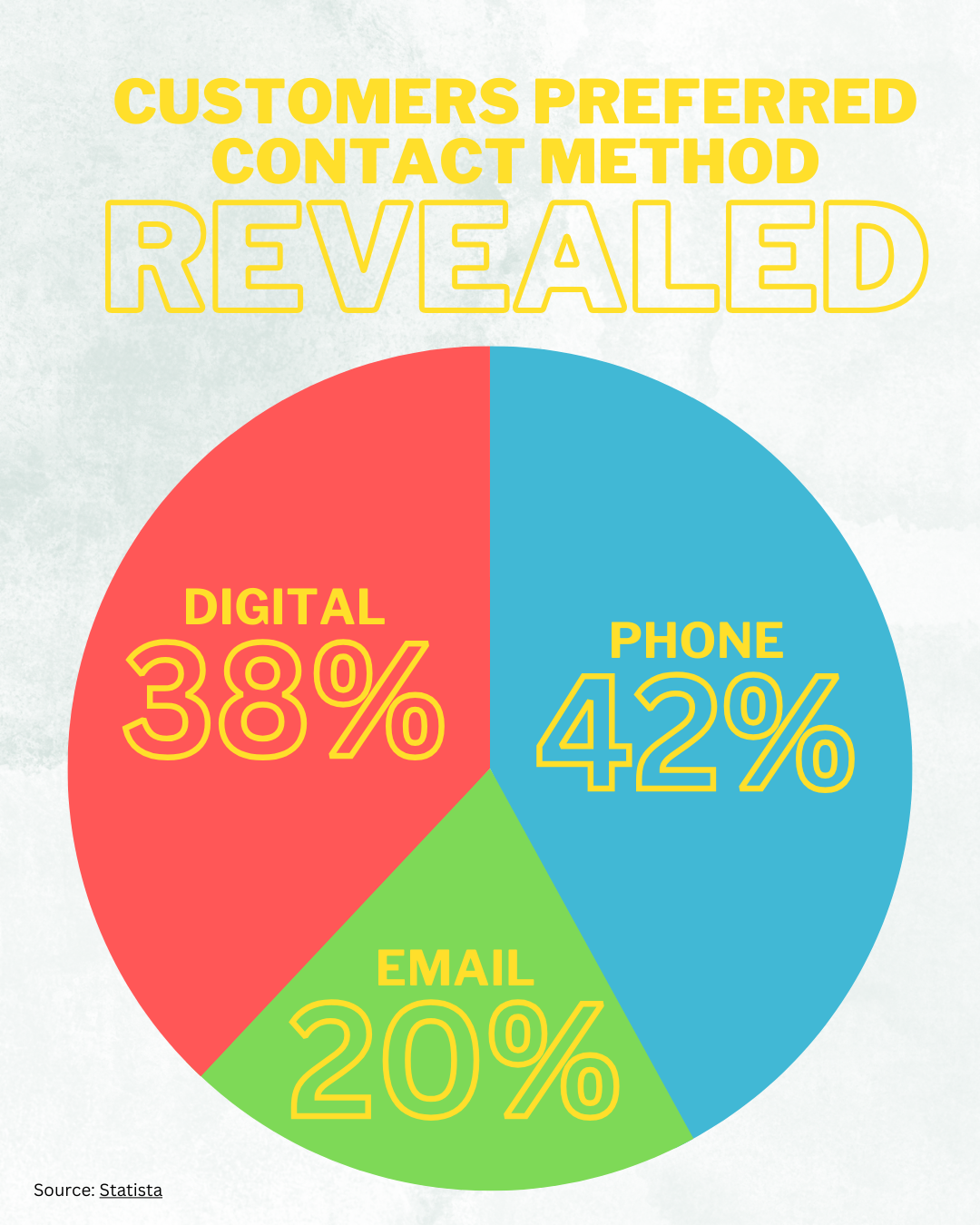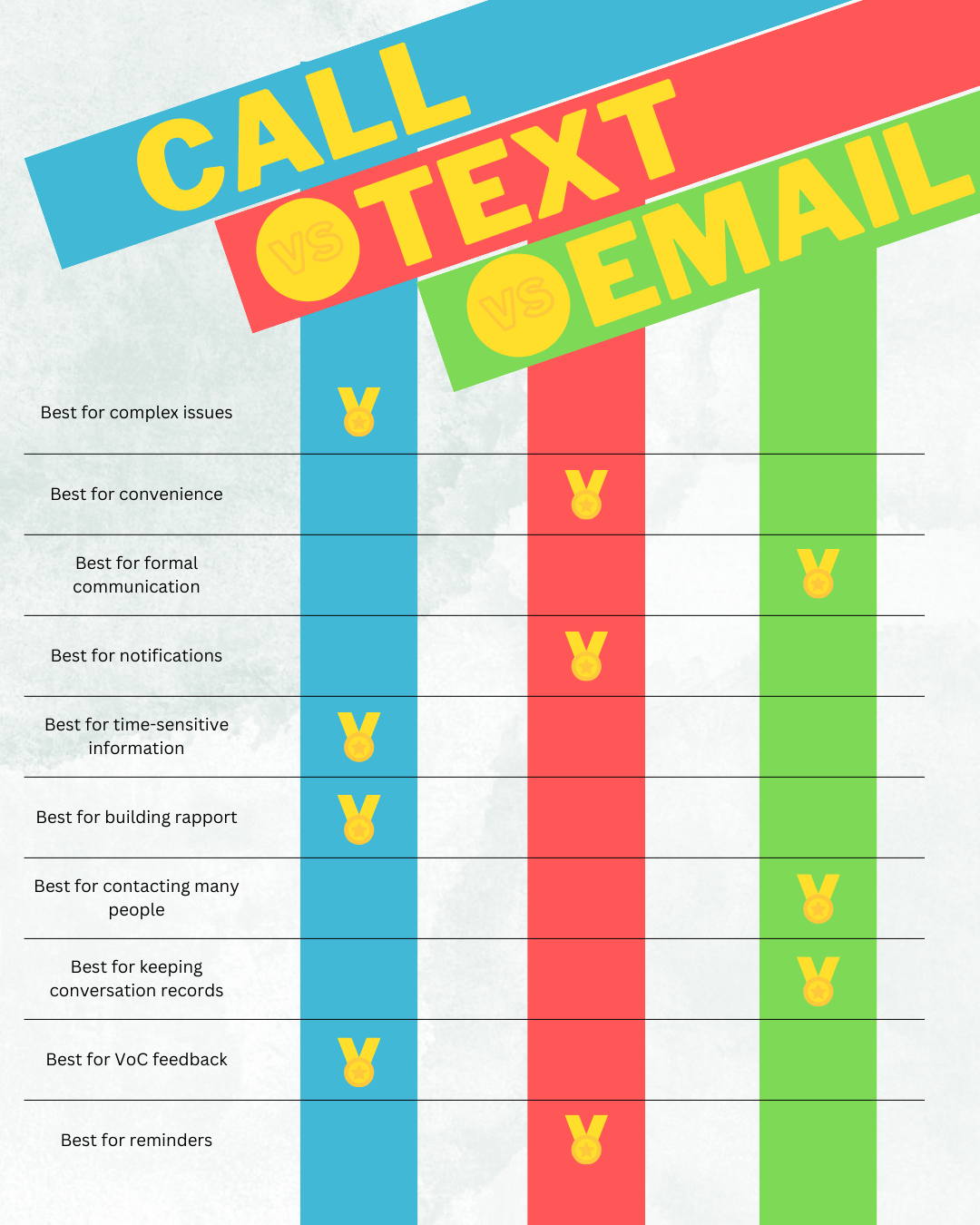Benefits of Using Voice Bots for Customer Service
The classical understanding of customer service is being significantly changed as more and more businesses shift toward artificial intelligence (AI)...
4 min read
![]() Mosaicx
:
September 06, 2023
Mosaicx
:
September 06, 2023

How do customers want to get in touch with your company? Are phone numbers obsolete? What about email, chat, text, and social?
There is a growing trend towards embracing alternative forms of communication, and as technology continues to evolve, businesses try to adopt every new channel.
This blog discusses whether that's a good idea and reveals if this practice matches customers' preferred contact method.
In today's digital age, businesses are constantly exploring new avenues to connect with their customers and provide efficient customer service. While there is a growing trend towards alternative forms of communication such as email, chat, and social media, a recent survey suggests that phone calls remain the preferred contact method for resolving customer service issues among customers in the United States.
The survey revealed that an impressive 42 percent of respondents expressed a preference for phone calls when it comes to resolving their concerns. This finding highlights the enduring significance of phone conversations in customer service, even amidst the rapid advancements in technology.
While businesses strive to embrace various communication channels, it is crucial not to forget older channels that still align with customer preferences, ensuring you provide a seamless and satisfactory experience for their valued customers.

While many customers say they prefer calling, a live agent doesn't have to answer right away. According to Harvard Business Review, 81% of customers across industries attempt to take care of matters themselves before reaching out to a live representative.
This statistic highlights the increasing demand for self-service options in customer service. Businesses must not only embrace new communication channels but also invest in self-service solutions that empower customers to find solutions on their own.
Over the phone, the standard for self-service has long been IVR. With the introduction of AI, intelligent virtual agents (IVA) are now the best choice for empowering self-service in the most popular channel.
Although phone came out on top, more than half of customers prefer to use other channels. The preferred contact method often depends on what the customers needs to accomplish. A customer may prefer text for two-factor authentication but prefer phone for complex issues. Below, we describe the differences between various channels and when you should consider using each.
The best way to communicate with customers depends on the specific situation. Here are some general guidelines for when to use email vs. phone call:
Use a phone call when:
Use email when:
When talking to their friends, coworkers, and other acquaintances, many people prefer text messaging over phone calls in most cases. It's a convenient and effective form of communication.
Those same people sometimes prefer texting with their favorite brands too, but it depends on the situation. Here are some situations when you should choose texting vs. calling.
Use texting to:
Use a phone call to:
Customers prefer text messaging over email in many cases. Customers can send a text message from anywhere, at any time. They don't have to worry about checking their email or being put on hold. They can expect a response to their text message within minutes, faster than most email replies. Text messaging also feels more natural and personal.
However, there are some cases where customers may prefer email over text messaging. For example, if the customer needs to provide a lot of information, such as their order number or a detailed description of their problem, email may be the better option. It's also best for formal communication. Here are some examples when you should choose texting vs. emailing:
Use texting to:
Use email to:

Ultimately, the best way to communicate with customers is the way that they prefer. By offering multiple ways for customers to contact you, you can ensure that they can get the help they need when they need it.
Here are some additional factors to consider when choosing between a phone call, text and email:
By considering all of these factors, you can choose the best way to communicate with customers and ensure that they receive the help they need. But even after identifying when a phone call is the right option, there's more work to be done. Read our tips on creating a voice technology strategy to make resources spent on phone calls aren't wasted.

The classical understanding of customer service is being significantly changed as more and more businesses shift toward artificial intelligence (AI)...

The banking industry caters to a diverse customer base with some of the highest demands and expectations. Every interaction is an opportunity to...
Exceptional customer service helps businesses stand out from the rest. It is also a common expectation of every customer because they remember how...